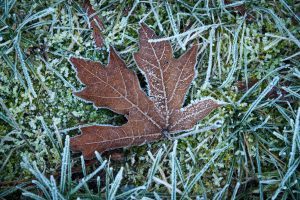
Leaf Management
Utilize Fallen Leaves for Composting
Autumn leaves can provide valuable nutrients to your lawn, but if left unattended, they can smother the grass. To make the most of fallen leaves, collect them and use them for composting. Remove the leaves from your lawn using a rake or blower, and add them to your compost pile. Avoid using leaves that have been treated with pesticides or any inorganic materials. Composted leaves can be used to enrich your garden and provide essential nutrients during the winter.
Consider Mulching Mowing
If you prefer a more convenient approach to leaf management, consider using a mulching mower. Mulching mowers finely chop the leaves and disperse them back onto the lawn as mulch. This process helps to break down the leaves and return their nutrients to the soil. Mulching mowers save you time and effort while still providing the benefits of leaf recycling.
Aeration and Overseeding
Importance of Aeration
Aeration plays a vital role in maintaining a healthy lawn, especially before winter sets in. The process involves creating small holes in the soil to alleviate compaction and improve air circulation, water infiltration, and nutrient absorption. Aeration also helps to break up thatch build-up, allowing for better root development. Renting a core aerator from a home garden store is an affordable and effective way to aerate your lawn.
Guidelines for Aeration
Before aerating your lawn, ensure that the soil is moist but not waterlogged. Dry and compacted soil may hinder the aerator’s effectiveness. Start by making a couple of passes around the lawn’s perimeter to create a buffer zone for turning the aerator. Then proceed to go back and forth over the rest of the lawn, crisscrossing paths to ensure thorough aeration. After aerating, the holes left by the aerator can be filled with compost, which will aid in soil health and nutrient distribution.
Benefits of Overseeding
Overseeding involves spreading grass seed over existing turf to fill in thin or bare areas. It is particularly beneficial in the fall because the cooler temperatures and consistent moisture create an optimal environment for seed germination. By overseeding before winter, you can ensure a fuller and healthier lawn in the spring. Consider using a rotary spreader to evenly distribute the seed, especially for larger areas.
Timing for Overseeding
To maximize the success of overseeding, aim to complete the process approximately 6-8 weeks before the first hard freeze. This timing allows the grass seed to establish roots before winter dormancy. Cool-season grasses, such as Kentucky bluegrass and fescue, are ideal for overseeding in the fall. Follow the recommended seeding rate on the grass seed packaging and ensure proper watering to facilitate germination.
Lawn Maintenance
Mowing Height Adjustment
As winter approaches, gradually lower your cutting deck to reduce the height of the grass. Lowering the cutting height helps prevent field mice and other animals from burrowing through tall grass during the winter. Aim to maintain a short grass length to discourage pests and promote a healthier lawn.
Proper Watering
During the winter months, adjust your watering schedule to accommodate the cooler temperatures and reduced evaporation. Water your lawn lightly, preferably in the early morning, to allow sufficient time for the grass blades to dry before nightfall. Avoid overwatering, as it can lead to fungal diseases and other issues. Monitor weather conditions and adjust your watering frequency accordingly.
Fertilization Considerations
Before winter arrives, it’s essential to provide your lawn with adequate nutrients. Fertilizing in the fall prepares the grass for the dormant winter period and ensures a strong comeback in the spring. Choose a fertilizer with a balanced ratio of nitrogen, phosphorus, and potassium, suitable for your specific grass type. Follow the manufacturer’s instructions regarding application rates and timing.
Weed Control
While winter is not the peak season for weed growth, it’s still essential to address any existing weeds in your lawn. Weeds can compete with grass for nutrients and hinder its overall health. Consider using herbicides or natural weed control methods to eliminate weeds before they have a chance to spread and become more challenging to manage.
Additional Winter Lawn Care Tips
Protecting Delicate Plants
If you have delicate plants or shrubs in your lawn, take extra precautions to protect them from the winter elements. Cover sensitive plants with burlap or other protective materials to shield them from frost and freezing temperatures. This step will help preserve the health and vitality of your landscape during the colder months.
Snow Removal Techniques
When snow accumulates on your lawn, be cautious when removing it. Avoid using heavy machinery or shovels that may damage the grass or underlying soil. Instead, use a lightweight snow blower or a plastic shovel to gently clear the snow. Additionally, avoid piling the snow on delicate plants or areas where it may cause damage when it melts.
Pest Prevention
Winter can bring pests that seek shelter in your lawn. To prevent infestations, remove any debris, such as fallen leaves or branches, where pests may hide. Keep the lawn well-maintained and free from excessive thatch, as it can provide a haven for pests. Monitor your lawn for signs of pests and take appropriate action if necessary.
Winterizing your lawn is a crucial step in maintaining its health and ensuring a vibrant spring revival. By following these essential tips and techniques, you can protect your lawn from harsh winter conditions and set it up for success in the coming seasons. Remember to address leaf management, perform aeration and overseeding, and maintain proper lawn care practices throughout the winter months. With proper preparation and care, your lawn will thrive and provide a beautiful landscape for years to come.
Contact us (859-314-LAWN) for more information or a free instant quote!
—
 About Green & Grow
About Green & Grow
Green & Grow is a full service lawn care company specializing in lawn mowing, fertilization & weed control, aeration & seeding, insect control, and more!
> Learn More

 About Green & Grow
About Green & Grow